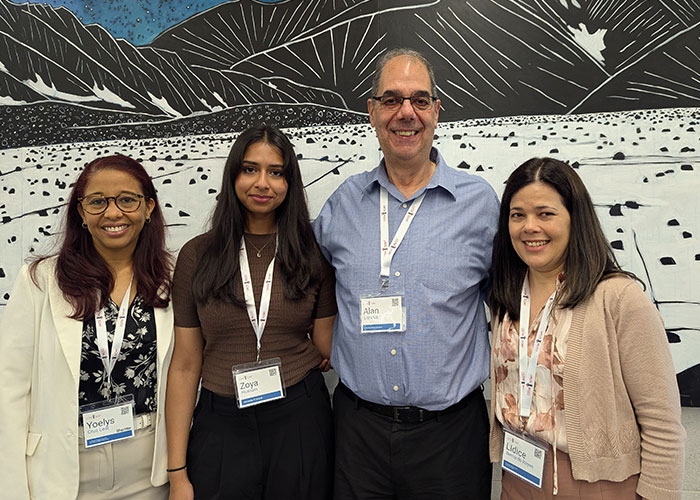From bench to conference: A trainee's highlights from CSTM 2025

The Canadian Society for Transfusion Medicine (CSTM) annual conference, held in partnership with Canadian Blood Services and Héma-Québec, took place on May 29 - June 1, 2025, in St. John’s, Newfoundland with the theme of “No lab is an island.”
Coinciding with CSTM, Canadian Blood Services' annual Research Day offered an opportunity for its extended research network to collaborate, share their research, and connect. Following these events, we invited trainee attendees from across the network to reflect on their experiences and key learnings.
This blog was prepared by Zoya Hussain, a Master’s student working with Canadian Blood Services scientist, Dr. Alan H. Lazarus located in Toronto.
Tell us a bit about yourself – what is your role and research area of interest?
I am a Master of Science student at the University of Toronto, working under the supervision of Dr. Alan Lazarus. My research focuses on understanding how varying levels of antibody quantity affect macrophage effector function, specifically, how macrophages either nibble off pieces of red blood cells (a process called trogocytosis) or fully consume them (phagocytosis). The goal of this work is to better understand how anti-D immunoglobulin prevents red blood cell alloimmunization in the context of hemolytic disease of the fetus and newborn (HDFN). To do this, we’re taking a close-up look at macrophages to explore how they respond under different conditions of antibody exposure.
What was it like attending these events as a trainee in the lab of a Canadian Blood Services scientist?
The experience was both inspiring and motivating, I had the opportunity to engage with researchers, clinicians, and fellow trainees from across Canada. I was very excited for the opportunity to attend CSTM and Research Day for the first time, and for the opportunity to give an oral presentation at the conference. It was meaningful to see how academic research contributes to the broader landscape of transfusion science.

Thinking about Research Day specifically, are there any highlights you are taking away from your participation?
Research Day stood out for its collaborative and welcoming atmosphere. It was a great space for trainees to share their work and receive thoughtful feedback. I especially appreciated how open the discussions were. The conversations weren’t limited to our specific areas of focus, and there was a genuine sense of curiosity and exchange among all attendees. I particularly enjoyed the small group facilitated discussions, which created an informal setting to interact with peers, senior investigators, and leadership. It really highlighted how many different angles we can take when tackling a single scientific question.
Did you present your research during the CSTM 2025 conference? If so, what were some of the key messages you shared with attendees?
Yes, I gave an oral presented titled “Distinct IgG-Sensitization Levels Drive Macrophage Preference for Red Blood Cell (RBC) Trogocytosis versus Phagocytosis.” The key message I hoped to share was that the amount of antibody coating red blood cells may influence the type of response initiated by macrophages. In other words, whether macrophages engage in trogocytosis (nibbling) or phagocytosis (engulfment). This work may help us better understand how anti-D prevents alloimmunization in HDFN by modulating macrophage behavior in subtle but important ways.
What was the most memorable moment from this year and what did it help you learn?
The most memorable aspect of this year’s conference was the atmosphere itself.
“Both CSTM and Research Day created space for researcher trainees to contribute meaningfully to the discussion. It’s encouraging to be part of a field where trainees are supported, challenged, and reminded that our work has impact beyond the bench.”
What stood out most was how focused the event was on transfusion medicine. People weren’t just attending talks; they were genuinely interested, asking thoughtful questions, and engaging with the science being presented.
Canadian Blood Services – Driving world-class innovation
Through discovery, development and applied research, Canadian Blood Services drives world-class innovation in blood transfusion, cellular therapy and transplantation—bringing clarity and insight to an increasingly complex healthcare future. Our dedicated research team and extended network of partners engage in exploratory and applied research to create new knowledge, inform and enhance best practices, contribute to the development of new services and technologies, and build capacity through training and collaboration. Find out more about our research impact.
The opinions reflected in this post are those of the author and do not necessarily reflect the opinions of Canadian Blood Services nor do they reflect the views of Health Canada or any other funding agency.